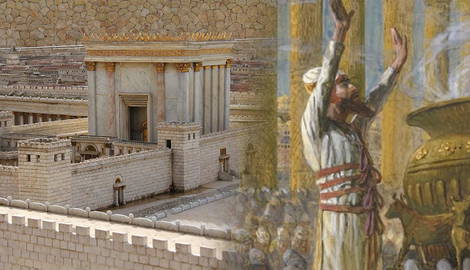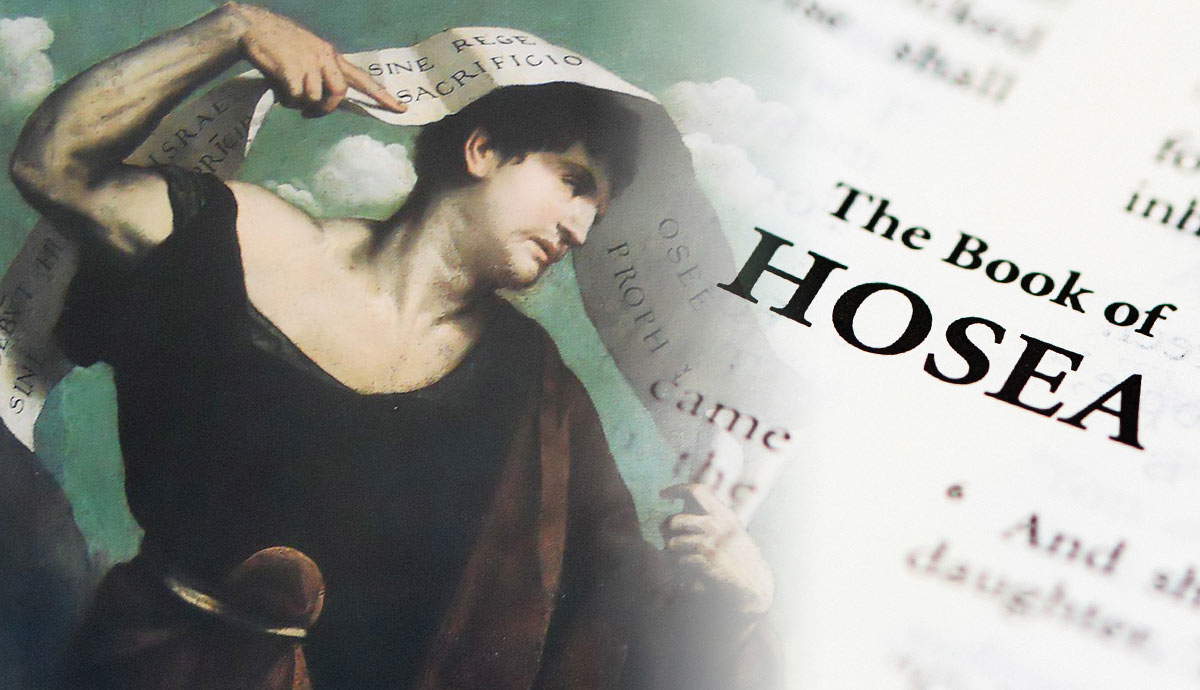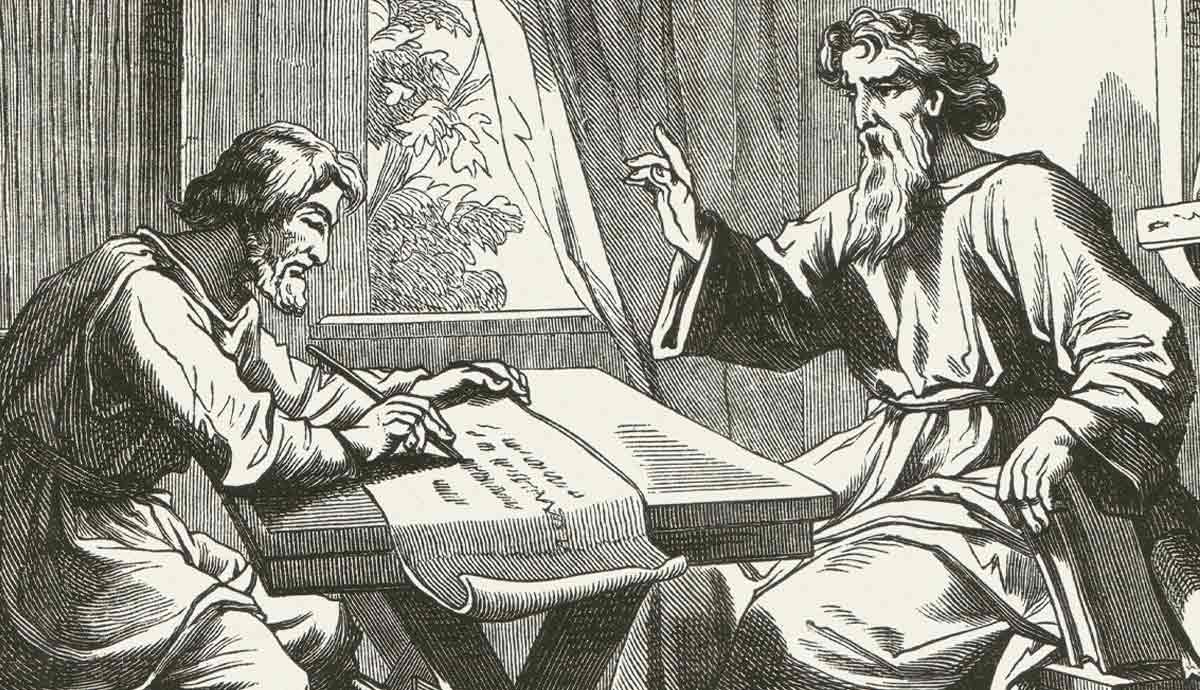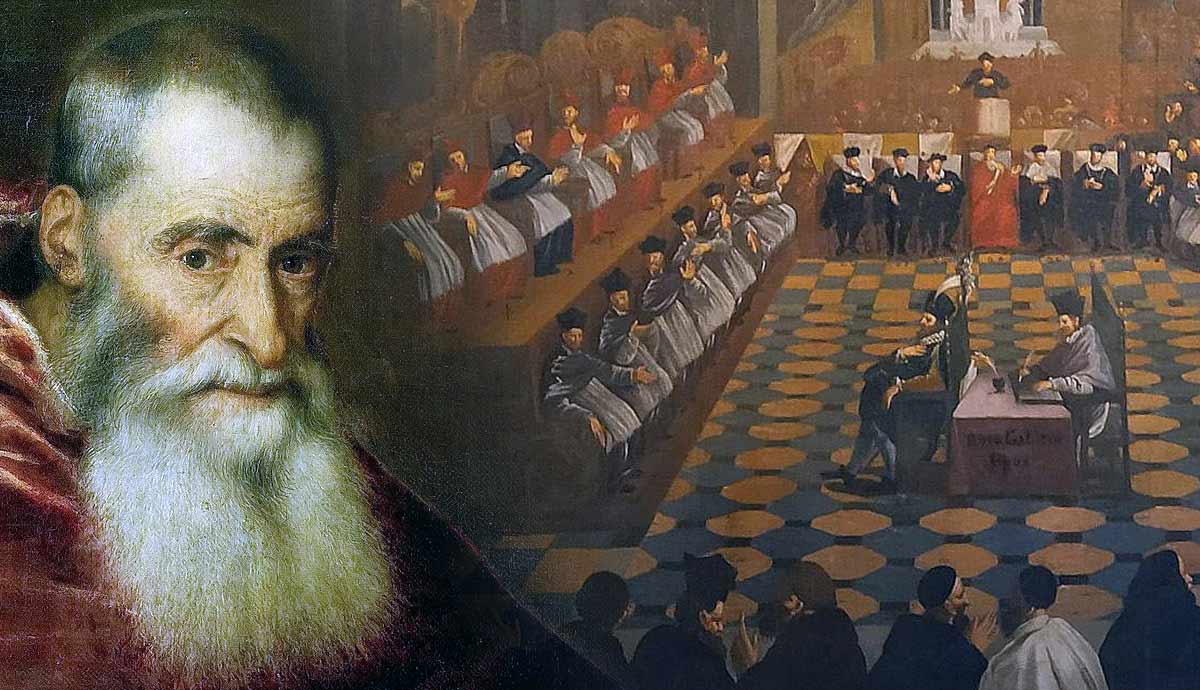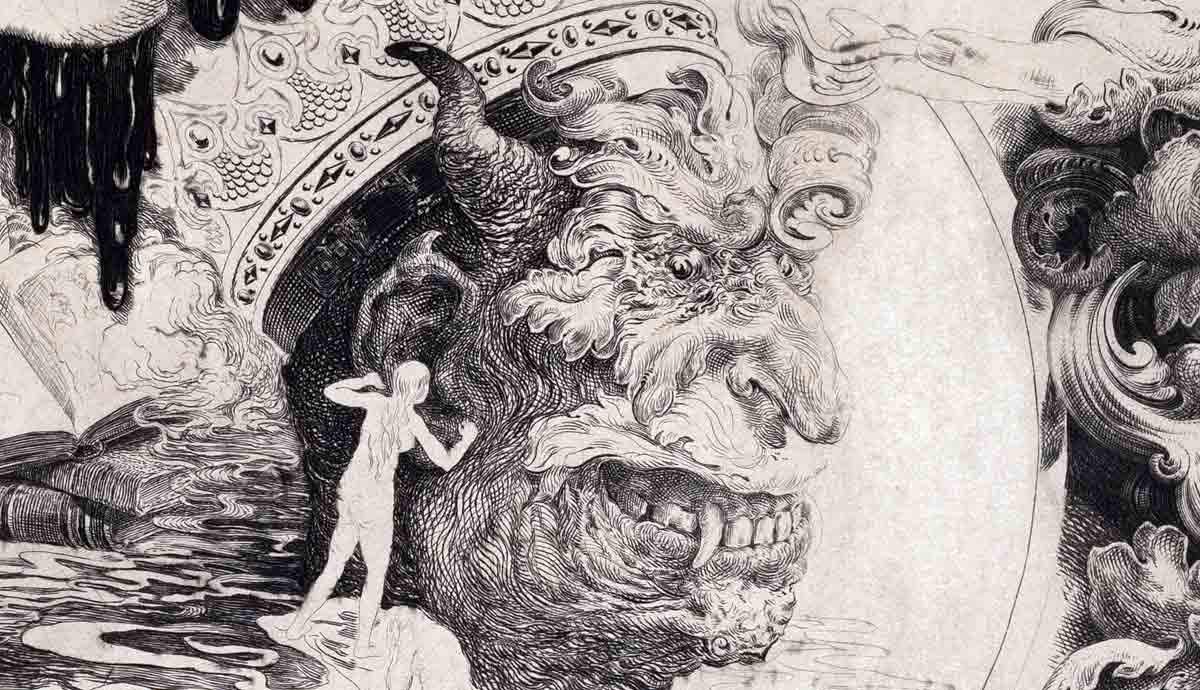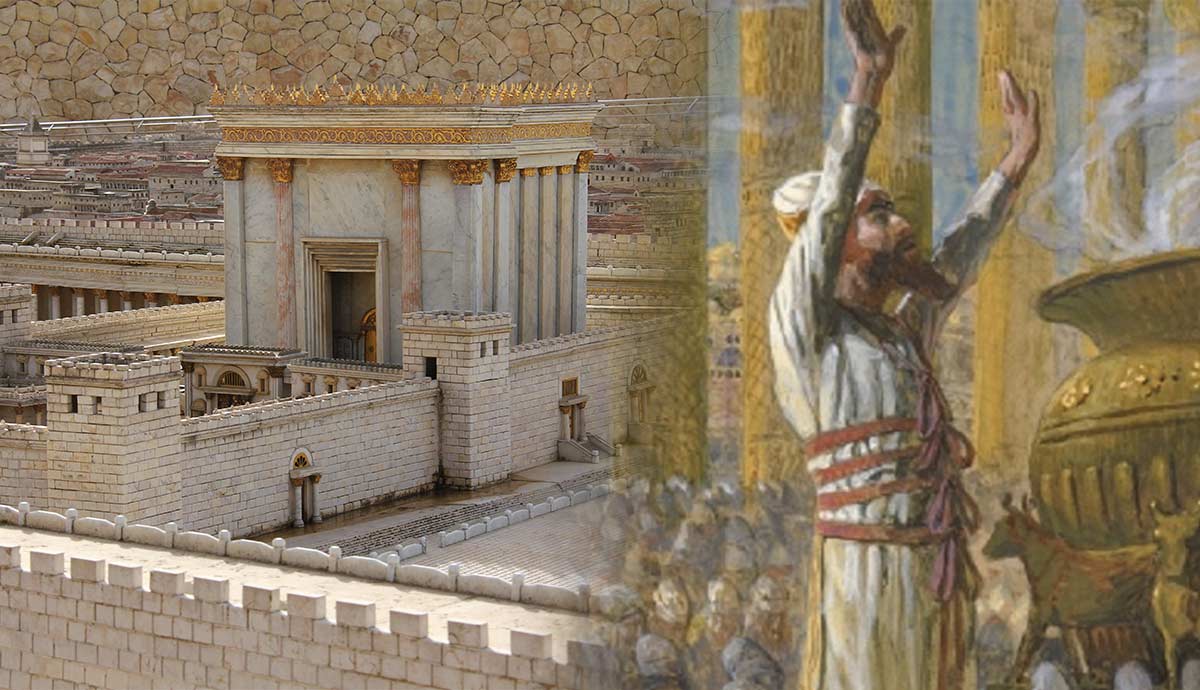
The Temple in Jerusalem was the structure that replaced the Tabernacle the Israelites traveled around with throughout their sojourn in the desert. For 40 years, and even after that, from when the Israelites conquered the promised land until their third king was crowned, the tent structure of the ceremonial system was where God’s people went to receive forgiveness for sins. Though David gathered what was needed to build the temple, he was not allowed to oversee its construction. It was his son, King Solomon, who replaced the tent of the congregation with a more permanent structure.
The Purpose and Plans

When Moses visited Mount Sinai to meet with God, he received specific instructions on the sanctuary the Israelites had to construct for him.
Exodus 25:8-9
“And let them make me a sanctuary, that I may dwell in their midst. Exactly as I show you concerning the pattern of the tabernacle, and of all its furniture, so you shall make it.”
From this instruction, the sanctuary is intended to serve as a dwelling place for God among his people. As such, the particularity of the instructions on the furniture and the practices associated with the sanctuary is understandable. God revealed a “pattern” for the Tabernacle. The word tabnı̂yth, translated as “pattern” means structure and by implication a model, or resemblance. Keep this in mind as we will return to this idea a little later.
Exodus 25-30 provides the details of furniture and utensils artisans had to craft and it also specifies how the priests had to be consecrated for service and what they had to wear while ministering in the sanctuary. Every detail had some significance, and the specificity of the instructions serves as an indication of its importance.
The Tabernacle and the Temple

The Tabernacle was a temporary structure that could be deconstructed and moved as the Israelites sojourned through the desert and for approximately the first 440 years of their residence in the promised land. Everything from the cloth and skin the tent had to be made of, to how and by whom the tent, furniture, and other articles had to be carried when the sanctuary was in transit, was detailed.
The temporary tent was later replaced by a magnificent temple. David, who desired to build the Temple, was not authorized to construct it because of the blood he had spilled (1 Chronicles 22:8-10). The privilege of building the Temple fell on King Solomon, though David did much of the work to prepare for the construction project his son would engage in. Solomon also called on Hiram, king of Tyre, a good friend of his father, to assist in some of the construction work.
The Temple had a porch (ulam), a holy place (hekal), and a holy of holies (debir) which housed the Ark of the Covenant, and two enormous cherubim of 15 feet in height. Two grand bronze pillars flanked the entrance to the temple. The pillars were called Jachin and Boaz. The temple courtyard had a bronze sea and lavers for ritual cleansing purposes while the holy place housed the table of shewbread, the menorah, and the altar of incense.

When Solomon dedicated this temple, known as the First Temple to later generations, God’s glory filled it. 1 Kings 8:10-13 records:
“And when the priests came out of the Holy Place, a cloud filled the house of the LORD, so that the priests could not stand to minister because of the cloud, for the glory of the LORD filled the house of the LORD. Then Solomon said, ‘The LORD has said that he would dwell in thick darkness. I have indeed built you an exalted house, a place for you to dwell in forever.’”
2 Chronicles 7:1 states that:
“As soon as Solomon finished his prayer, fire came down from heaven and consumed the burnt offering and the sacrifices, and the glory of the LORD filled the temple.”
These miraculous phenomena served as evidence that God approved of the work the Israelites had done in constructing a dwelling and that God accepted the offerings they had presented. The Temple was, therefore, the house of the Lord amid the people of Israel.
Sadly, this temple was destroyed when the Babylonians took God’s people into exile. The Second Temple, which Jews who returned to Jerusalem rebuilt with permission from the Persians many years later, was not as richly decorated, nor did it have the display of God’s presence as the First Temple had. The Jews must have desired a display of the presence of God as their forefathers had known many years before. The Second Temple was destroyed by the Romans in 70 CE.
The Temple’s Significance in Christianity

When the New Testament reflects on the Old Testament ceremonial system, which was centered around the sanctuary, it becomes clear that the Tabernacle and the Temple have much to tell us about the ministry of Christ. A pivotal act of worship here involved bringing a spotless lamb to the sanctuary and confessing sins while laying hands on the lamb which signified the transfer of the sin. The lamb was then slain. John the Baptist points out that the lamb was a symbol of Christ (John 1:29, 36).
Hebrews, on several occasions, highlight the ministry of Jesus signified by the high priests who served in the sanctuary. The high priest was a mediator between God and man. Jesus is the eternal mediator who, unlike the earthly high priests who had to atone for their own sins, was sinless yet took the sins of man on him. The high priests were symbols of what Jesus would do. Once a year, the high priest would enter the holy of holies, where the Ark of the Covenant was kept, on the day of atonement.
When Jesus died on the cross, the veil separating the holy place and the holy of holies tore from top to bottom (Matthew 27:51, Mark 15:38, Luke 23:45). This event signified the end of the separation between man and God. Hebrews 10:19-22 explains:
“Therefore, brothers, since we have the confidence to enter the holy places by the blood of Jesus, by the new and living way that he opened for us through the curtain, that is, through his flesh, and since we have a great priest over the house of God, let us draw near with a true heart in full assurance of faith, with our hearts sprinkled clean from an evil conscience and our bodies washed with pure water.”

Remember how the Temple was meant as a dwelling place for God among his people? Jesus, in a sense, personified the Temple by physically dwelling among his people while he walked this earth. The Temple was a symbolic representation of his ministry when he was on earth, and of his heavenly ministry on behalf of believers after his ascension.
The Tabernacle and Temple served as the “pattern” or model of the heavenly plan of salvation. Multiple symbols and types of Christ are identifiable in the sanctuary and the associated services. Among these are the lamb, the high priest, and the shewbread, while the laver represents baptism. The sacrifice of the lamb represents the death of Christ. The offerings made on the altar of incense represent the intercession done by Christ on behalf of believers. The cakes (or loaves) of bread on the table of shewbread served as a symbol of God’s provision for the physical and spiritual needs of his people. Jesus self-identified as the bread of life who can provide eternal satisfaction to those who rely on him (John 6:35).

Another significant connection between the earthly Temple and the heavenly abode is the holy of holies. According to 1 Kings 6:20, the holy of holies in the Temple was as wide as it was long as it was high, in other words, a cube. This is where the glory of God appeared between the cherubim on the ark of the covenant. This space was the focal point of the sanctuary and the place where God resided among his people. The New Jerusalem has the same cube structure according to Revelation 21:16. Significantly, the New Jerusalem has no sanctuary:
“And I saw no temple in the city, for its temple is the Lord God the Almighty and the Lamb. And the city does not need of sun or moon to shine on it, for the glory of God gives it light, and its lamp is the Lamb.” (Revelation 21:22)
The parallels are uncanny. The city has no temple because it is, itself, the inner sanctuary that the holy of holies represented: the place where the glory of God is on full display.
So, what was the Temple in ancient Israel? It was the focal point of the Israelite ceremonial system which served as a dwelling place for God, a place he could reveal and prefigure the plan of salvation in Jesus Christ hundreds of years before the Son of God became a man. It is a multi-faceted representation of the presence of God among his people that revealed many aspects of the ministry of Christ and the future glory of the heavenly Jerusalem.
